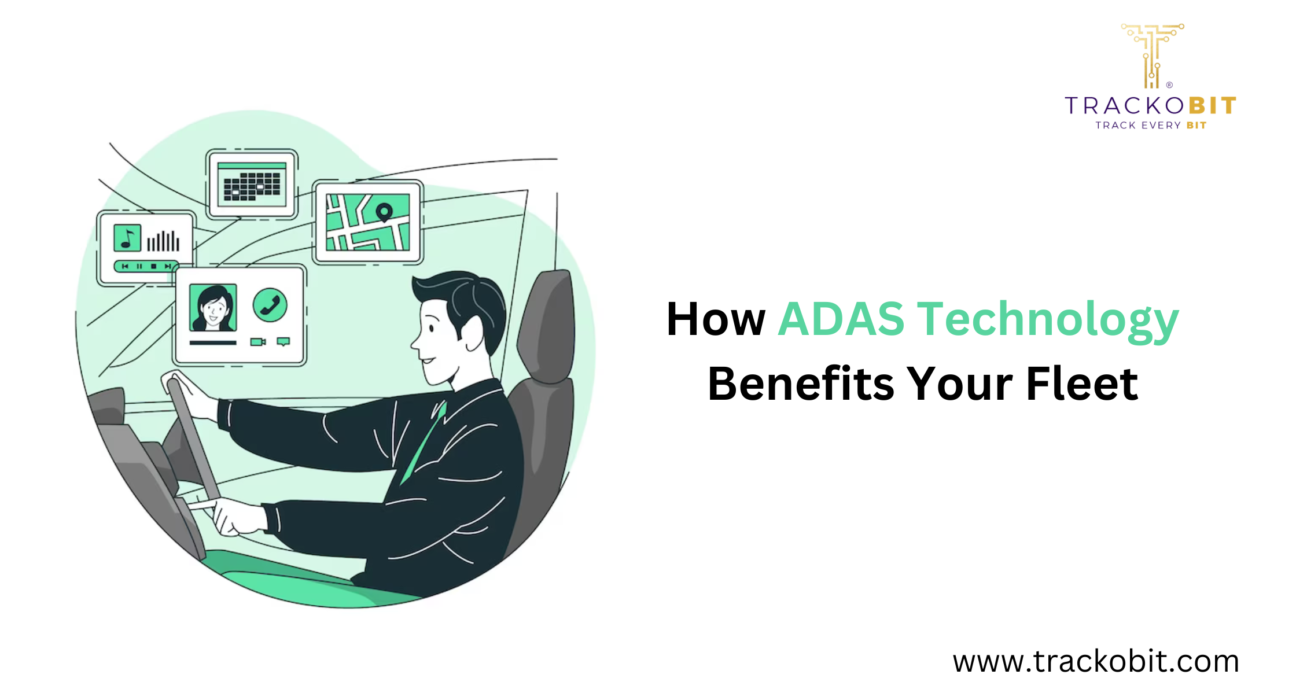How ADAS Technology Benefits Your Fleet

Keeping your drivers and the public safe is a top priority for any fleet manager. New technologies are emerging all the time to improve road safety, and one of the most promising is Advanced Driver-Assistance Systems (ADAS).
This article will explore how ADAS can benefit your fleet by reducing accidents, protecting drivers, and improving overall safety.
But before we get into the details let’s just briefly cover what ADAS Systems is.
What is ADAS Software?
ADAS or advanced driver-assistance systems are electronic systems found in vehicles that utilize the capabilities of video telematics. These systems are most effective when combined with real-time vehicle tracking systems.
By utilizing sensors such as radar and cameras, the Advanced Driver Assistance System can perceive the surrounding environment and provide valuable information to the driver. It offers features such as video supervision, visual alerts, and analytical reports. This further allows us to see what the drivers may not be able to see.
ADAS provides you with notifications/alerts on events like-
- Collisions
- Lane switch alerts
- Overspeeding
- Red light jumping
The prime reason to incorporate an ADAS system in your fleet management solutions is that it provides ample benefits like enhanced safety, fuel efficiency, reduction in maintenance costs, and real-time monitoring and reporting. This doubles when it’s combined with driver monitoring solutions.
How Does the Technology Benefit Your Fleet
Advanced Driver Assistance Systems (ADAS) technology offers numerous benefits for fleet management, enhancing safety, efficiency, and overall operational effectiveness. Here’s a detailed look at how ADAS technology can benefit your fleet:
1. Improved Safety
ADAS includes features like collision avoidance, lane departure warning, blind-spot detection, and automatic emergency braking. These technologies help reduce the likelihood of accidents by providing drivers with real-time alerts and automated responses to potential hazards.
- Collision Avoidance: Alerts drivers to potential collisions with other vehicles, pedestrians, or obstacles, allowing them to take preventive action.
- Lane Departure Warning: Notifies drivers if they unintentionally drift out of their lane, helping to prevent sideswipe accidents.
- Blind-Spot Detection: Monitors areas that are difficult for the driver to see, warning of vehicles or objects in the blind spots.
- Automatic Emergency Braking: Automatically applies the brakes if a collision is imminent and the driver does not react in time.
2. Enhanced Driver Performance
ADAS provides valuable assistance to drivers, helping them maintain optimal driving performance and reducing the cognitive load associated with long hours on the road.
- Adaptive Cruise Control: Adjusts the vehicle’s speed to maintain a safe distance from the vehicle ahead, reducing driver fatigue on long trips.
- Driver Monitoring Systems: Detect signs of driver fatigue or distraction and issue alerts, promoting safer driving behavior.
3. Reduced Operational Costs
By preventing accidents and promoting safer driving habits, ADAS can lead to significant cost savings for fleet operators.
- Lower Insurance Premiums: Insurance companies often offer lower premiums for fleets equipped with ADAS due to the reduced risk of accidents.
- Reduced Repair and Maintenance Costs: Fewer accidents mean less damage to vehicles, leading to lower repair and maintenance expenses.
- Fuel Efficiency: Features like adaptive cruise control and eco-driving assistance can help optimize fuel consumption, reducing overall fuel costs.
4. Increased Fleet Efficiency
ADAS can contribute to better route planning and traffic management, enhancing the overall efficiency of fleet operations.
- Traffic Sign Recognition: Helps drivers comply with traffic laws by recognizing and displaying traffic signs, potentially avoiding fines and improving route compliance.
- Navigation Assistance: Integrates with GPS systems to provide real-time navigation updates, helping drivers avoid traffic congestion and choose the most efficient routes.
5. Enhanced Data Collection and Analysis
ADAS systems generate valuable data that can be used to improve fleet management and driver training programs.
- Telematics Integration: ADAS data can be integrated with telematics systems to monitor vehicle performance, driver behavior, and operational metrics.
- Predictive Maintenance: Analyzing ADAS data can help predict when a vehicle will need maintenance, reducing downtime and improving fleet reliability.
- Driver Training Programs: Insights from ADAS can be used to tailor driver training programs, focusing on areas where drivers may need improvement.
What Value Does the Software Add to Your Fleet?
Now that you know the benefits of the system, let’s have a look at what value the software adds to your fleet.
- Enhanced Safety
The ADAS software helps to prevent accidents by providing real-time alerts to drivers about potential risks, such as lane departure warnings, forward collision warnings, and pedestrians.
- Driver Monitoring System and Training
The driver behavior monitoring features are also considered one of the most premium features of the ADAS systems. The software when added to the driver monitoring System helps monitor driver behavior providing data on speeding, harsh braking, collisions, and other unsafe events. Fleet managers can use this information for further driver training programs and improving overall driver performance and safety.
- Fuel efficiency
The Advanced Driver Assistance System can contribute to fuel efficiency through features such as adaptive cruise control, which optimizes speed and distance between vehicles, and lane optimization, which reduces fuel consumption.
- Predictive maintenance
Advanced Driver Assistance System, is a crucial component in ensuring fleet safety and maintenance through predictive management. By integrating advanced sensors and data analytics, ADAS constantly monitors various aspects such as vehicle performance, driver behavior, and external factors.
Through real-time monitoring, managers can effectively assess the condition of their vehicles and schedule maintenance accordingly. This proactive approach enables the system to identify and address potential issues before they become major problems.
- Analytical reports
Analytical reporting is considered best for data-driven decision-making. With the help of analytics reports, fleet drivers can easily see how pedestrian drivers are operating their vehicles safely with the easy distinction between good drivers and the ones that need training.
In addition to this, obtaining insurance and claims will be much easier as you will have access to a wide range of data evidence. Your fleet operations and safety procedures are tracked and analyzed with advanced driver-assist systems.
Final Words
Well to wrap it all up, it will never be wrong to say the Advanced Driver Assistance System has been one of the greatest innovations of all time. The software has not only enhanced visibility on the road but also streamlined business operations.
TrackoBit’s comprehensive fleet management solutions, integrated with video telematics and Advanced Driver Assistance System, offer a range of features including video supervision, visual alerts, and analytical data. With ADAS, potential dangers such as collisions, lane switching, and signal violations become more visible, ensuring the safety of your vehicles and drivers.





